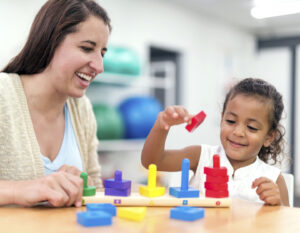

School is back and it’s business as usual… The kids are perhaps starting a new school or settling back into their schools, so along with a million other things to do within our own routines we have to get the kids and their daily schedules organised and that is by no means an easy task!
If I was to ask you to hand over all your time-related devices such as your wristwatch, smartphone, diary or clock, how would you respond? Would you panic, laugh, protest or perhaps avoid the question? It makes us realise that we are so very dependent upon these devices to aid us throughout our hectic lives and very busy days.
But wait, let’s stop for a moment and ask ourselves: why do is it expected that children don’t use similar tools to organise and prepare themselves like we do? This is because young children are just beginning to grasp the concept of time. At this stage, it’s futile to expect them to cooperate fully when they don’t know or understand when things are going to occur or change in their routines. In my work as an early childhood educator, I’ve found that using sand timers is a fantastic method for helping kids through this development phase:
Top 3 Reasons to Use Sand Timers:
1. It supports a child’s understanding of changes and transitions within their routines.
2. It’s a visual and practical tool that helps them begin to grasp the concept of ‘time’.
3. It supports problem-solving, reasoning and cooperative skills and reinforces positive behaviour management.
From the Kids’ Perspective
For kids, their concept of time is built upon routines, which are established upon some basic core understandings. This routine understanding means children associate specific things to certain times of the day, such as when a baby sees a bottle of milk and demonstrates their understanding of feeding time by gurgling and waving their arms in excitement. An older child will get up and move towards an adult when they hear or see the scooping up of keys signifying it’s ‘time to go out’. A child identifies and understands symbolic and real artifacts that are meaningful to them to make cognitive connections that represent ‘time’.
Whilst these cognitive developments are taking place there are many other complex areas of development taking shape too. The reasoning, negotiating and cooperative stages are a minefield and are hugely challenging areas of development and significant milestones that need careful teaching and nurturing to develop.
Remember that kids are busy too in their ‘kid world’ and we must respect that their busy world is just different to our busy world. For example, how would you feel if you were halfway through solving something and someone came along without any notice and said, “Put the Sudoku puzzle down, it’s time to go.” Then, they proceeded to take the puzzle from you and hassle you out the door? We’re all guilty of doing this to children, however, we must respect that they are busy learning at whatever it is they’re doing so we shouldn’t always expect them to stop immediately and conform to our requests.
Using Visual Tools and Sand Timers
Using a sand timer will support children to know what is expected of them, how and why. These visual cues help children to stay on task for a short time, whether it’s reading a book or doing a puzzle. Finding an activity and using a sand timer clearly sets out what you want your kid to do and sharing the calming activity means that you’re reinforcing positive behaviour. You’re modeling what’s expected and rewarding your kid with your time. After all, this is usually all the child really wants!
Young children do not learn the concept of ‘time’ until they are a little older, so give them a ‘countdown’ time to prepare themselves. A 2-min or 5-min sand timer used as a countdown time to ‘tidy up’ will help them to wind down what they are doing and prepare for ‘moving on’. This is empowering children to manage their own feelings, negotiation skills and finally, cooperation.
You can use sand timers as a positive reinforcer too. If your child wants your attention and you’re on the phone, use the sand timer to indicate that they need to wait for 5 mins. Then when the sand is empty, make sure you fulfill your promise, even if it’s just a quick 5-minute story time. Start the timer again, and off you go! Your child will point out when the sand is finished.
Finally, sand timers can also teach young kids the concept of ‘turn taking’. This is a huge developmental milestone and precedes the ‘sharing’ stage of development. Using a sand timer for 1-5 minutes, depending on the age of your kid and the activity, lets you take turns in a structured way. Seeing the sand disappearing to the bottom and watching the pile of sand in the bottom grow has a calming effect on children and lets them ‘see’ time. What’s more, children can’t argue the point with a sand timer – it’s clear, tangible and fair for all to see.
Tips to Introducing Sand Timers
- Don’t try to negotiate with a sand timer when your child is tired or hungry; at these times, their neurotransmitters are at a deficiency level, which means they’re less able to focus and therefore less able to listen to your reasoning or negotiating.
- Plan time to introduce sand timers, and don’t expect overnight results. Children need to be taught their purpose and the benefits. Introducing them when you can be consistent in using them is essential, such as school holidays or even a weekend when you don’t have too many time restrictions.
- The adult must have control of the situation and the timer to ensure that the kid fully understands the meaning and benefits. Children need to understand the rules of using timers: not turning them over once they have started, not moving them, etc.
- Teach your child how the sand timer works and do a countdown before turning it over again, which also reinforces the development of cooperative skills.
- Use sand timers according to your child’s age or developmental stage: use a 2-min sand timer for a child aged between 18 months to 2 years, a 3-min timer for a 3 year old, and a 5-min timer for a 4 year old and up.
- Use the timers according to the given situation. If it’s a very challenging situation then use one that you know they can cope with. If a three year old loves a specific train and you want to take turns, use the two-minute timer and so forth! Remember you’re setting your kid up to succeed, so be patient and above all, remember it’s a learning process!
To see these wonderful tools in action, contact Karen Kelly at Safari Kid where they’re part and parcel of the everyday school routine of a Safari Kid!
 View All
View All











 View All
View All





 View All
View All


 View All
View All













